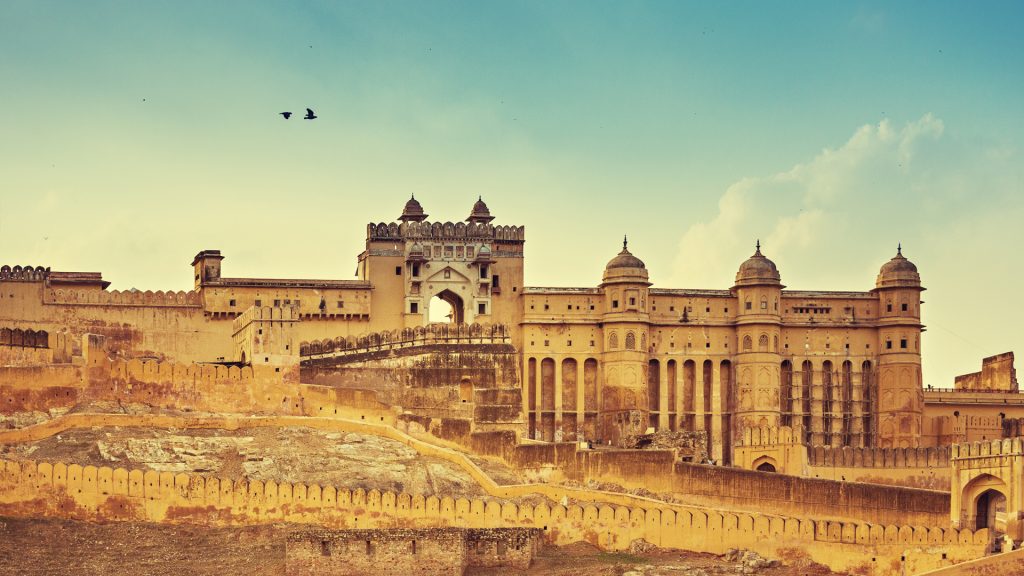Welcome to Jaipur, the Pink City of India, renowned for its regal architecture and vibrant culture. Here’s a detailed tour of five top monuments to explore in and around Jaipur, complete with historical insights, visiting tips, and suggestions for capturing memorable photographs.

1. Hawa Mahal (Palace of Winds)
Historical Significance: Built in 1799 by Maharaja Sawai Pratap Singh, the Hawa Mahal is an architectural marvel with its intricate latticework. The palace was designed to allow the royal ladies to observe street festivities without being seen.
Photographing Tips: Capture the facade of the palace in the early morning or late afternoon light to highlight the stunning pink sandstone. For a unique shot, use a wide-angle lens to encompass the palace’s facade in its entirety.
Best Time to Visit: Early morning is ideal to avoid crowds and capture the palace in the soft morning light.
Best Time of Year: October to March when the weather is cooler.
Entry Fee: ₹50 for Indian citizens, ₹200 for foreign tourists.
2. Amber Fort (Amer Fort)
Historical Significance: Constructed in the late 16th century by Raja Man Singh I, Amber Fort is a stunning blend of Hindu and Mughal architecture. It served as the main residence of the Rajput rulers.
Photographing Tips: The fort’s panoramic views are spectacular from the ramparts. Sunset provides a beautiful backdrop with warm hues illuminating the fort’s structure. Consider capturing the fort from the Maota Lake for a reflective shot.
Best Time to Visit: Early morning or late afternoon to avoid the heat and crowds.
Best Time of Year: October to March is ideal due to pleasant weather.
Entry Fee: ₹100 for Indian citizens, ₹500 for foreign tourists.
3. City Palace
Historical Significance: The City Palace, built in the 18th century by Maharaja Sawai Jai Singh II, is a majestic blend of Rajput, Mughal, and European architectural styles. It remains the residence of the royal family.
Photographing Tips: Focus on the intricate interiors and the courtyards. The palace’s opulent rooms and decorative elements are best captured with a camera that can handle low light. For exterior shots, the golden hour provides a soft, flattering light.
Best Time to Visit: Morning when the palace opens to avoid the mid-day heat.
Best Time of Year: October to March for comfortable weather.
Entry Fee: ₹200 for Indian citizens, ₹700 for foreign tourists.
4. Jantar Mantar
Historical Significance: This 18th-century astronomical observatory built by Maharaja Sawai Jai Singh II features a collection of architectural astronomical instruments. It’s a UNESCO World Heritage site known for its accuracy and scale.
Photographing Tips: The geometric shapes and structures are fascinating. Early morning or late afternoon light is best for capturing the large sundials and instruments without harsh shadows.
Best Time to Visit: Early morning or late afternoon to avoid the crowds and harsh midday sun.
Best Time of Year: October to March is the most comfortable.
Entry Fee: ₹50 for Indian citizens, ₹200 for foreign tourists.
5. Jal Mahal (Water Palace)
Historical Significance: Built in the 18th century by Maharaja Jai Singh II, Jal Mahal is located in the middle of Man Sagar Lake. It was used as a retreat for the royal family and is known for its picturesque setting.
Photographing Tips: Capture the palace from the lakeside at sunrise or sunset for dramatic reflections in the water. For a different angle, consider a boat ride around the lake.
Best Time to Visit: Early morning or late evening for the best lighting and reflections.
Best Time of Year: October to March is the ideal period for pleasant weather.
Entry Fee: There is no entry fee for visiting the lake and the exterior of the palace. However, boat rides might cost around ₹500-₹800.
Travel from Delhi to Jaipur
Mode of Travel: You can take a train or a private car. The train is a convenient option, with various options like the Shatabdi Express or the Ajmer Express.
Cost of Travel:
- Train: ₹300-₹1,200 (depends on class and train type).
- Private Car: ₹3,000-₹5,000 (one way, depending on the vehicle and distance).
Accommodation Options
- Expensive:
- Rambagh Palace: A former royal residence, now a luxury hotel offering regal accommodations and services. Prices start at ₹20,000 per night.
- Mid-Range:
- Alsisar Haveli: A charming heritage hotel with traditional decor and modern amenities. Rates start at ₹6,000 per night.
- Cheaper:
- Zostel Jaipur: A budget-friendly hostel with clean, simple accommodations and a social atmosphere. Rates start at ₹1,000 per night.
Enjoy your trip to Jaipur, and I hope these recommendations make your visit both memorable and enjoyable!

Comments